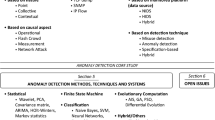Abstract
Now day’s computer network is an essential part of our life. Day by day, there is a high increment in the uses of computer network applications such email, bloggers, internet group, forums, conference, youtube and online TV. The exponential increment in video applications traffic, there increases challenges of computer network and it faces various problems like shortage of memory, link failure, slow processor, time out etc. These problems may lead to network congestion. Multicast is efficient system which handles the video traffic but it also suffers with congestion problem due to design vulnerability. Many researchers are working in this burning issue and they provided various solutions such as source based, receiver based and hybrid one. In this paper, we propose an efficient multicast congestion control approach which suggests the efficient joining, leaving operation based on adaptive throughput. The simulated results show that proposed scheme provides better throughput at various parameters.











Similar content being viewed by others
References
Li, B., & Liu, J. (2003). Multirate video multicast over the internet: An overview. IEEE Network, 17(1), 24–29.
Jain, R. (1990). Congestion control in computer networks: Issues and trends. IEEE Network Magazine, 4(1), 24–30.
Deering, S. E., et al. (1986). Host extensions for IP multicasting, Request for Comments 988.
Singh, K., & Yadav, R. S. (2008). A survey on multicast congestion control. In Proceedings of third innovative conference on embedded systems, mobile communication and computing (ICEMC\(^{2}\)) (pp. 186–197).
Deering, S. (1988). Multicasting routing in internetwork and extended LANs. In SIGCOMM summer 1988 proceeding.
Distance Vector Multicast Routing Protocol, Request for Comments 1075 (1988).
Fenner, B. et al. (2006). Internet Group Management Protocol (IGMP) Request for Comments 4605.
Yang, C., & Reddy, A. V. S. (1995). A taxonomy for congestion control algorithms in packet switching networks. IEEE Network, 5, 34–45.
Floyd, S., Handley, M., Padhye, J., & Widmer, J. (2000). Equationbased congestion control for unicast applications. In Proceeding of the ACM SIGCOMM (pp. 43–56). Stockholm, Sweden.
Zhang, Q., Guo, Q., Ni, Q., Zhu, W., & Zhang, Y.-Q. (2006). Source adaptive multi-layered multicast algorithms for real-time video distribution. IEEE/ACM Transactions on Networking, 8(6), 720–733.
Kumar, S., & Singh, K. (2012). Efficient single rate based multicast congestion control. In IJCA Proceedings on national conference on innovative Paradigms in engineering and technology.
Johansen, S., Kim, A. N., & Perkis, A. (2007). Quality incentive assisted congestion control for receiver-driven multicast. In IEEE communications society ICC.
Sisalem, D., & Wolisz, A. (2000). MLDA: A TCP-friendly congestion control framework for heterogeneous multicast Environments. In IEEE.
Widmer, J., & Handley, M. (2001). Extending equation basedcongestion control to multicast applications. In Proceedings of the ACM SIGCOMM ’01.
Kammoun, W., & Youssef, H. (2008). An adaptive mechanism for end-to-end multirate multicast congestion control. In Proceedings of the third international conference on digital telecommunications (pp. 88–93).
Kioumourtzis, G., et al. (2011). Adaptive smooth simulcast protocol (ASSP) for video applications: Description and performance evaluation. Journal of Network and Systems Management, 19, 143–177.
Cote, G., Erol, B., Gallant, M., & Kossentini, F. (1998). H.263+: Video coding at low bit rates. IEEE Transactions on Circuits and Systems for Video Technology, 8(7), 849–866.
McCanne, S., Jacobson, V., & Vetterli, M. (1996). Receiver-driven layered multicast. In Proceedings of ACM SIGCOMM (pp. 117–130). New York, USA.
Yin, D. S., Liu, Y. H., et al. (2006). A new TCP friendly congestion control protocol for layered multicast. In Proceedings of the IASTED conference on internet and multimedia systems and applications. Innsbruck, Austria.
Byers, J., Frumin, M., et al. (2000). FLID-DL: Congestion control for layered multicast. In Proceedings of the NGC2000 (pp. 71–81), Palo Alto, USA.
Kulatunga, C., & Fairhurst, G. (2006). TFMCC protocol behaviour in satellite multicast with variable return path delays. In IEEE.
Legout, A., & Biersack, E. W. (2000). PLM: Fast convergence for cumulative layered multicastb layered multicast transmission. In Proceedings of ACM SIGMETRICS.
Kwon, G., & Byers, J. (2002). Smooth multirate multicast congestion control. Technical Report BU-CS-TR-2002-025 Boston University.
Rizzo, L. (2000). A TCP-friendly single-rate multicast congestion control scheme. In Proceedings of the ACM SIGCOMM (pp. 17–28). Stockholm, Sweden.
Author information
Authors and Affiliations
Corresponding author
Rights and permissions
About this article
Cite this article
Singh, K., Yadav, R.S. Efficient Multicast Congestion Control. Wireless Pers Commun 78, 1159–1176 (2014). https://doi.org/10.1007/s11277-014-1809-9
Published:
Issue Date:
DOI: https://doi.org/10.1007/s11277-014-1809-9




